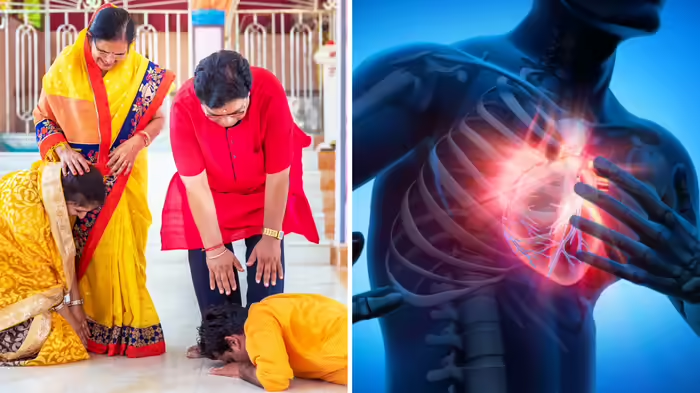
By Surendra Agrawal | Navbharat Times | 14 Nov 2025, 12:49 PM
In Indian tradition, touching the feet of elders is considered a gesture of respect and a way to seek blessings. But beyond its cultural and emotional value, this practice may also help you notice early signs of several life-threatening diseases in elders at home.
The reason is simple: many major nerves and blood vessels from the body end in the feet, making them a sensitive area where symptoms of heart failure, liver disease and blocked veins often appear first.
Recognizing these early changes can help identify hidden illnesses before they turn dangerous.
Heart Failure
Swelling in the feet or ankles can be a sign of peripheral edema, often linked to heart failure.
When the heart is unable to pump blood effectively, fluid begins to accumulate in the lower limbs.
Common signs include:
- Swelling in both feet or ankles
- Breathlessness even at rest
- Rapid body swelling
- Persistent fatigue
If these symptoms appear suddenly or worsen, they may indicate developing heart failure.
Liver Disease
The liver produces proteins that maintain fluid balance in blood vessels.
When liver disease becomes severe, the production of these proteins decreases, causing fluid leakage into surrounding tissues—especially the feet, ankles and abdomen.
Warning symptoms include:
- Swelling in legs or feet
- Yellowing of eyes (jaundice)
- Pale or yellowish skin
- General weakness
Such signs may point to advanced liver dysfunction and should not be ignored.
Blocked Veins (Deep Vein Thrombosis – DVT)
If swelling appears in only one leg, accompanied by pain, redness, or warmth, it could indicate a blocked vein.
This condition, known as Deep Vein Thrombosis (DVT), involves a blood clot in the deep veins—often in the calf.
The danger:
A clot can break free, travel to the lungs, and cause a life-threatening emergency known as pulmonary embolism.
What Should You Do?
If you notice swelling or discomfort in the feet or ankles:
- Observe the pattern – Is it in one leg or both? Does it worsen after sitting or standing?
- Check for other symptoms – breathlessness, fatigue, pain, redness, or yellowing of eyes.
- Seek medical advice promptly – Early diagnosis can prevent complications.
- Lifestyle changes – Regular movement, low-salt diet, and monitoring health conditions can significantly help.
Consult a Doctor
If swelling is persistent or accompanied by any worrying symptoms, consult a doctor without delay.
Timely medical intervention can uncover hidden diseases and prevent serious outcomes.
Disclaimer
The information and claims mentioned in this article are based on details sourced from an Instagram reel. Navbharat Times does not guarantee accuracy or medical effectiveness. Always consult a qualified expert before trying any remedies or drawing conclusions about health conditions.
If
Discover more from SD NEWS agency
Subscribe to get the latest posts sent to your email.